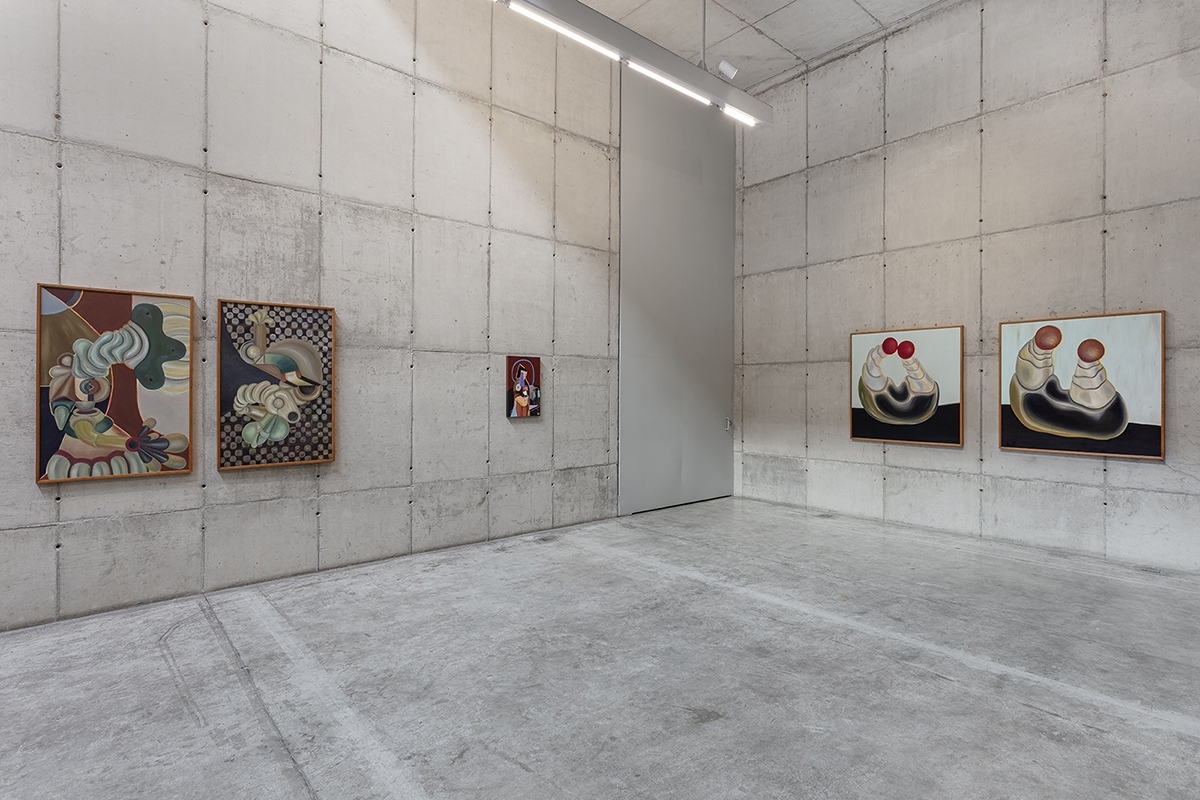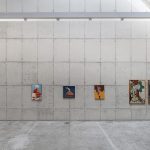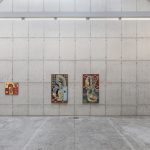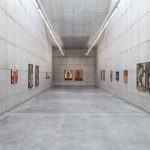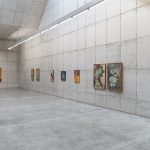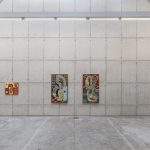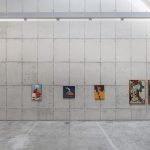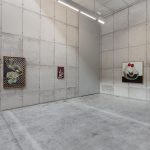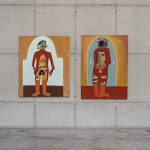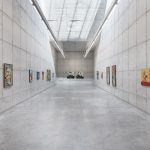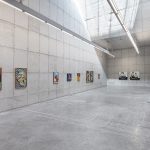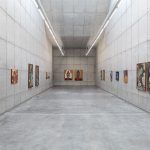“The international women’s movements have constructed ‘women’s experience’, as well as uncovered or discovered this crucial collective object. This experience is a fiction and fact of the most crucial, political kind. Liberation rests on the construction of the consciousness, the imaginative apprehension, of oppression, and so of possibility.”1
A Cyborg Manifesto, Donna Haraway
With never before seen works, commissioned for the project, Mônica Barbosa and Rayana Rayo, present a deep oneiric universe, with paintings of varied dimensions that transit between organic and industrial, figurative and abstract, in a composition that guides us through several subjective constructions.
Mônica Barbosa’s output is related to research that begins to question accessibility, transition, territoriality and arrives in the fertile field of the body, mainly that of the women, in constant deconstruction. Having lived in many cities throughout Brazil, the artist knows the feeling of displacement intimately; the impulse of migratory movement spanning the country directs a huge part of her quest. In one of our conversations the artist reports: “Inside the body, the house, that allows me to go on”. During the last eight years her practice arrived in painting, ancestral gesture of her birthplace, from the rock paintings of Piauí, from red urucum on stone. There is a deep relationship between ancestral painting and ancestral migration in this work, in which we can see landscapes from the inside, bodies under construction, diving and birth.
Rayana Rayo consolidates her productions in painting from conversations and relationships, the inside and the outside, also elaborated by Mônica, are here being used as an interior analytic device. The series presented in this show are created in an intense conversation between the artist and her mother, about nearness and distance, while articulating in her life a journey of three aspects: work, identity and maternity. Shadows, encounters, and learning lead to question about what exists inside and outside of body? What does the body generate? In her paintings, the artist talks with herself making decisions within her composition, using her intuition, following other fields and fluxes of thought. There is a line that leads and tells a story through the oeuvres, creating a safe place of change and communication.
A sharp eye will notice an encounter between the human, the animal, and the mechanical in the pieces by both of the artists. This relationship presents other options of worldly perspectives: a oneiric world, organic, relational, internal, that strengthens the sensation of body metamorphoses, from the individual and technology, from body to earth.
We are hybrid and porous beings, the body is central to works of both artists, but a body that amplifies its own definition, escaping from frameworks and rigid structures that don’t bolster us. In her text, Re-enchanting the World, the author Silvia Federici tells us that is necessary for us to “reconnect what capitalism has divided: our relation with nature, with others, and with our bodies, enabling us not only to escape the gravitational pull of capitalism but to regain a sense of wholeness in our lives”2.
Noticing the women’s body as fragmented inside social structures in which we live is almost compulsory. The perspective of the works by Mônica and Rayana reduce this narrative to the point of the body presenting itself as disidentified and totally expanded. We have complex relationships with the world, with others, with our bodies, here the artists resume these narratives in a powerful practice of reflection on themselves and potential worlds.
The deep and intimate listening tells us that we are not what people expect of us, as explained to us by Donna Haraway in her text A Cyborg Manifesto, “[the existence of a] Painful fragmentation among feminists (not to mention among women) along every possible fault line has made the concept of woman elusive, an excuse for the matrix of women’s dominations of each other.” We are not and we will not be what people expect, our relationships intertwine and complexify in such unexpected and unique ways.
The subjectivities presented in Mônica and Rayana pieces are of a particular and unique order, external structures won’t end the strength of a body in movement, in transit, relating with others, the strength of a singular maternity in action, the subject that is machine and nature at the same time in the kaleidoscopic whirl of daily life.
Catarina Duncan
- HARAWAY, Donna. A cyborg manifesto: science, technology, and socialist feminism in the late twentieth century. In: HARAWAY, Donna. Simians, cyborgs, and women: the reinvention of nature. New York, Routledge, 1985, p. 149-181.
- FEDERICI, Silvia. Re-enchanting the world: Feminism and the Politics of the Commons. 1a edição. Canada: PM Press/Kairos, 2018.
